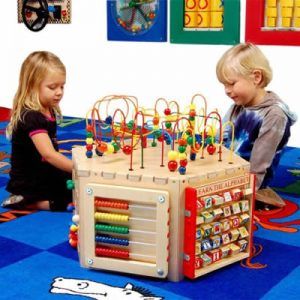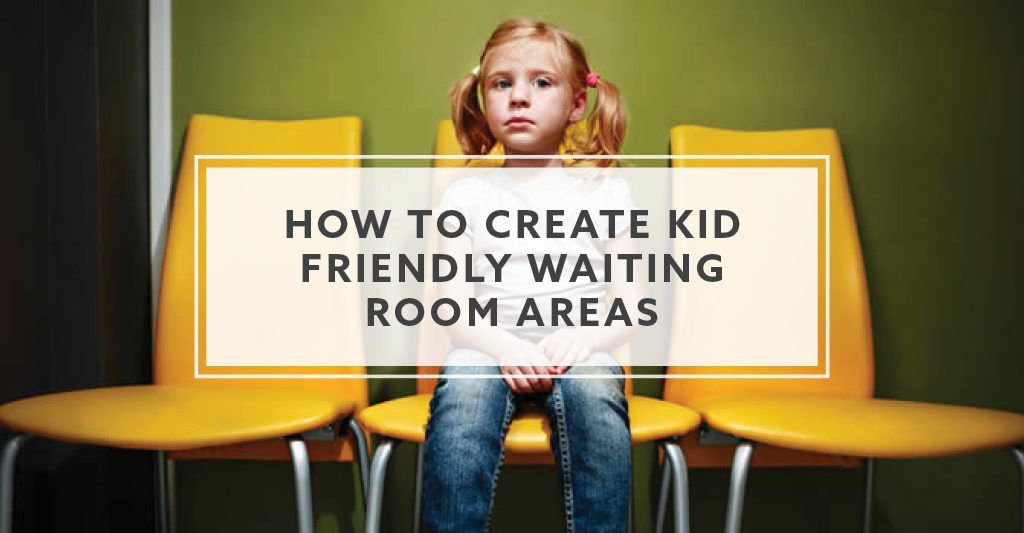Waiting rooms aren’t much fun for adults. Now imagine being a small kid dragged around to run errands and wait for appointments. It is hard to blame them if they get a little unruly, but it follows that if one kid in a waiting room isn’t happy, no one else in that room is happy either. Offices can go a long way in helping both parents and other clients to enjoy a more pleasant waiting room experience by simply considering the needs of all their visitors, both young and old. Here are some simple ways to create a kid-friendly waiting room that will benefit everyone.
Full Disclaimer: We are an office furniture dealer and sell some of the products we review. To learn more about the products we sell, our review process and why you can trust us, please visit: Why we’re different. Who is BTOD.com and The Breakroom Blog?
Create Kid-Friendly Waiting Room Links
- Include Pint-Sized Furniture
- Avoid Only Using Chairs
- Incorporate Soft Colors and Fabrics
- Plan for Strollers
- Provide Toys
- Use Screens Wisely
- Provide a Quiet Area
- Pay Attention to Lighting
1. Include Pint-Sized Furniture
You might not remember what the world looked like to you when you were a little kid, but just think about the scale of things. When you are a kid, everything around you is built to accommodate  people much larger than you. A world full of big chairs that are hard to climb into and tables that you can barely see over can feel intimidating.
people much larger than you. A world full of big chairs that are hard to climb into and tables that you can barely see over can feel intimidating.
The best way to make kids feel at ease and comfortable is to provide furniture that fits them. Including a small table and chairs or even a variety of different sized chairs can make even your smallest visitors feel welcome.
2. Avoid Only Using Chairs
In addition to providing child-sized furniture, it is also a good idea to incorporate loveseat style seating that doesn’t include armrests. This will allow parents to sit directly next to their children and help keep them occupied and under control. While other visitors may want their personal space, a mixture of seating options can help address everyone’s needs and keep them comfortable. Also, look for other forms of seating, such as ottomans and reception benches that come in unique designs. Incorporating fun shapes is another way to make the waiting room more welcoming and stimulating for kids
3. Incorporate Soft Colors and Fabrics
All too often waiting room office furniture comes in drab colors that feel clinical and sterile. While these colorless options may be cost-effective that isn’t doing much to make a good impression or create a kid-friendly waiting room. Tastefully adding some color can go a long way to creating a happier, more welcoming mood for kids and adults alike.
It is also a good idea to avoid using too much hard, plastic furniture. Instead opt for chairs and couches that are covered in a soft, durable material that can easily be cleaned. Incorporating fabric offers a variety of benefits. Not only does it create a friendly environment, but also cuts down on noise by absorbing sound while hard materials have a tendency to amplify sounds and send them bouncing around the room. Finally, fabric-covered furniture is safer for young children who have a habit of turning just about anything into a jungle gym.
4. Plan for Strollers
As you arrange the waiting room, remember that most kids come with a lot of accessories. From diaper bags to strollers, parents rarely have the luxury of traveling light. That is why you need to leave plenty of room for strollers and wheelchairs to navigate among chairs and around the waiting room.
5. Provide Toys
 Now, this might not be good advice for everyone, but it is something to consider. Simple toys and books are an easy way to keep kids occupied and content while they wait. However, you should keep in mind that these items will need to be cleaned and disinfected on a regular basis. This will require a certain amount of upkeep, but the effort may be worth providing a calm and relaxing waiting room where kids can play quietly without disturbing other guests.
Now, this might not be good advice for everyone, but it is something to consider. Simple toys and books are an easy way to keep kids occupied and content while they wait. However, you should keep in mind that these items will need to be cleaned and disinfected on a regular basis. This will require a certain amount of upkeep, but the effort may be worth providing a calm and relaxing waiting room where kids can play quietly without disturbing other guests.
If you don’t want to worry about spreading germs, then simple activity sheets and coloring books can be enough to provide some much-needed entertainment. Look for activities that parents and children can do together. This will actually provide some valuable educational engagement instead of simply creating a distraction.
6. Use Screens Wisely
While a TV can create a good distraction in a pinch, you also want to be careful about where you place TVs and what kind of programs you show. Pediatricians recommend that children be exposed to minimal screen time. The younger the child, the less they should be placed in front of a screen. Parents might not appreciate a constant stream of cartoons that may not be appropriate for their child. If you do choose to incorporate TVs in the waiting room, opt for more educational programs and respect any requests for the TV to be turned off.
7. Provide a Quiet Area
The florescent lights, bright colors and toys may be too much for a tired baby or toddler. If at all possible, create a quiet area where parents can take their tired or fussy children to relax without feeling overstimulated. Consider providing a rocking chair and dim lighting so that children can be soothed. This is an especially important area for doctor and hospital waiting rooms where sick children may need not feel up to playing while they wait to be seen.
8. Pay Attention to Lighting
Offices are notorious for using overhead fluorescent lighting. This type of artificial light is so harsh that it has been tied to migraines. Knowing that, imagine sitting with a young child for a long period of time in a crowded waiting room illuminated by fluorescent bulbs. It is enough to make anyone start feeling a little cranky. Instead of overhead lights, strategically place lamps through the waiting room and use soft light to create a warner glow that more closely mimics natural light.
Final Thoughts
It might be a lot easier to simply fill your front room with functional reception furniture that comes in varying shades of gray, but you aren’t doing anyone any favors. You will be surprised how much you can change the mood of your employees and your visitors just by putting a little thought into your waiting room design and décor. Small changes can help create a kid-friendly space that makes everyone’s wait a little more tolerable and show that you care about your visitors.
More Waiting Room Chairs Resources
- 5 Best Waiting Room Chairs For a Medical Office
- 8 Best Office Guest Chairs For 2025
- Top 5 Problems and Solutions Buying Waiting Room Chairs Online
- How-To: Picking The Right Upholstery For Your Waiting Room Chairs
- How-To Layout and Design The Perfect Waiting Room
- 5 Best Cheap Waiting Room Chairs For Your Office






